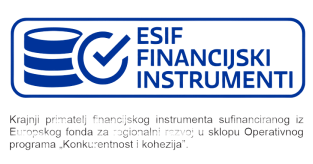
.png&w=3840&q=75)
Why the comparison matters
Leather once carried an automatic stamp of luxury and longevity. Now, life cycle assessments and rising vegan movements cast fresh light on its hidden costs. Understanding the numbers behind both plant based and animal options empowers designers and consumers to shape demand, not just follow trends.
Carbon footprint at a glance
Metric | Plant based leather (average bio PU blend)* | Chrome tanned cowhide* |
|---|---|---|
CO₂e per square metre | 6 to 12 kg | 110 to 267 kg |
Water use | 20 to 80 l | 15 000 to 17 000 l |
Land use | Often zero new land, uses agricultural waste | Up to 50 m² grazing including feed crops |
*Figures compiled from peer reviewed studies and brand LCAs. Data can vary by region and exact process.
Bold takeaway, even conservative numbers show a tenfold carbon cut when waste based plant sheets replace cowhide.
Why cowhide emits so much
Cattle produce methane, require vast rangeland, and their hides undergo energy intensive tanning. Chrome salts also add toxic load. While hide is technically a beef industry by-product, the sheer size of livestock emissions dwarfs other variables.
Plant leather’s carbon caveats
Plant sheets still rely on binders, often polyurethane. When fossil PU makes up more than half of the formula, carbon savings shrink. Water borne bio PU blends and mycelium foams score best.
Bold takeaway, ask suppliers for binder percentages and LCA documentation rather than accepting green labels at face value.

Cruelty and welfare
Animal leather originates from slaughter. Certifications like Animal Welfare Approved aim to ease concerns, but the process remains incompatible with vegan ethics. Plant based sheets contain no animal inputs, though some rely on beeswax topcoats, so always check details.
Bold takeaway, if zero animal involvement is your priority, plant leathers offer the clearest path.
Durability and performance
Property | Mid grade cowhide | Premium plant leather (Beer Skin class) | Entry plant leather |
|---|---|---|---|
Martindale abrasion cycles | 50 000+ | 28 000 to 35 000 | 15 000 to 20 000 |
Flex at sub zero | Cracks at -30 °C | Cracks at -20 °C | Cracks at -10 °C |
Thickness uniformity | Variable, needs splitting | Uniform, no splitting | Uniform |
Weight | Heavy | 25 percent lighter | 30 percent lighter |
Bold takeaway, top tier plant leathers approach cowhide on wear tests while shaving weight and cutting waste.
Repairability
Cowhide accepts traditional dyes and conditioners, allowing decades of patch work. Plant leathers need compatible repair gels and color matched PU paints. Industry wide standards for repair kits are still emerging.
Bold takeaway, plant leather technology is closing the repair gap, but hide keeps a slight edge for now.
Cost considerations
Product | Cowhide price range | Plant leather price range |
|---|---|---|
Small handbag | €120 to €400 | €90 to €350 |
Sneakers | €80 to €220 | €100 to €250 |
Jacket | €300 to €900 | €200 to €750 |
Higher R&D costs once made plant leathers boutique only. Scale and circular subsidies are narrowing the gap. Materials made from waste such as spent grain or cactus pads sidestep raw feedstock costs, letting labels match mid market hide prices.
Bold takeaway, price parity with cowhide has arrived for many accessories, jackets are next in line.
Chemical impact
Animal leather uses chromium salts which can convert to carcinogenic Cr VI if waste streams go wrong. Vegetable tanning lowers toxin risk but extends water use. Plant leather favours water based PU, epoxy coatings, or plant resins like alginate. Those chemistries still carry petroleum or energy costs, yet solvent free processes slice VOC emissions by up to 95 percent.
Bold takeaway, plant leather wins on toxin avoidance, but binder transparency controls its true green score.
End of life
Most cowhide decomposes slowly in landfill due to tanning chemicals. Upcycling into gelatine or collagen is possible but rare. Plant leathers with fossil PU behave like plastics, requiring mechanical or chemical recycling not yet widely available. Emerging mycelium and cork options can biodegrade in controlled composting.
Bold takeaway, wearing any leather longer is still the quickest route to lower impact until recycling systems scale.
Internal links for deeper context
Our broader environmental impact of sustainable materials post dives into global textile emissions if you want numbers beyond leather.
For a historical lens, history of leather and sustainable alternatives tracks humanity’s use of hide from caves to catwalks and explains how each era solved its own material problems.
Get granular with barley based sheets by reading the science behind Beer Skin where we publish tensile graphs and micrographs.
Curious about the wider family of green hides? The roundup waste born plant based leathers explores cactus, apple, mycelium and more.
If you fancy making wallets at home, DIY plant based leather projects supplies free patterns and bonding tips.

Designer checklist
Target use case, select abrasion rating to match expected wear.
Binder composition, ask for bio content percentages.
Colour fastness, confirm against ISO 105-X12.
Supply chain distance, waste sourced locally beats imported exotics.
End of life plan, partner with take back programs where possible.
Bold takeaway, aligning material spec with product purpose reduces both costs and returns.
Consumer shopping tips
Read labels, genuine leather means animal hide, anything else should specify PU or plant binder.
Smell the sheet, heavy chemical odour can flag solvent use.
Flex corners, cheap coatings crack early.
Ask brands for LCA summaries, reputable companies share PDFs, not fluffy slogans.
Bold takeaway, a thirty second in store test filters most greenwashing.
Common myths debunked
Myth, plant leather always biodegrades. Most contain synthetic binders that behave like plastics unless specifically certified home compostable.
Myth, animal leather is just beef waste. Hide value subsidises meat income and shapes slaughter economics.
Myth, plant leather peels in months. Low grade versions can, premium sheets backed by bio PU pass three year flex tests.
Myth, vegan means plastic. Mycelium foams, cork composites, and fruit skins show polymer free pathways.
Bold takeaway, dig past slogans to see actual ingredients and test data.
Frequently asked questions
Does plant leather smell like its feedstock? Post curing removes pineapple or beer aromas so finished sheets are neutral.
Can plant leather be waterproofed? Water based sprays formulated for synthetics add extra bead without blocking pores.
Is chrome free animal leather toxin free? It lowers heavy metal risk but still involves aldehydes, dyes and large water use.
Will plant leather replace cowhide completely? Market growth is rapid but hide still dominates heavy duty categories like work boots.
Can mixed plant and PU materials be recycled? Pilot chemical recycling can depolymerise PU, but industrial scale is.
Bold takeaway, questions drive clearer answers and better product choices.
Conclusion
Plant based leather slashes carbon and cruelty while reaching parity on many performance metrics. Cowhide retains a slight edge in absolute longevity and repair heritage. Choosing between them hinges on intended lifespan, ethical stance, and binder chemistry transparency. As technology advances, the performance gap narrows while the climate gap remains wide, making plant sheets a compelling default for most applications.
Bold takeaway, the cleaner future of leather is already on the cutting table, and every purchase vote hastens its spread.















